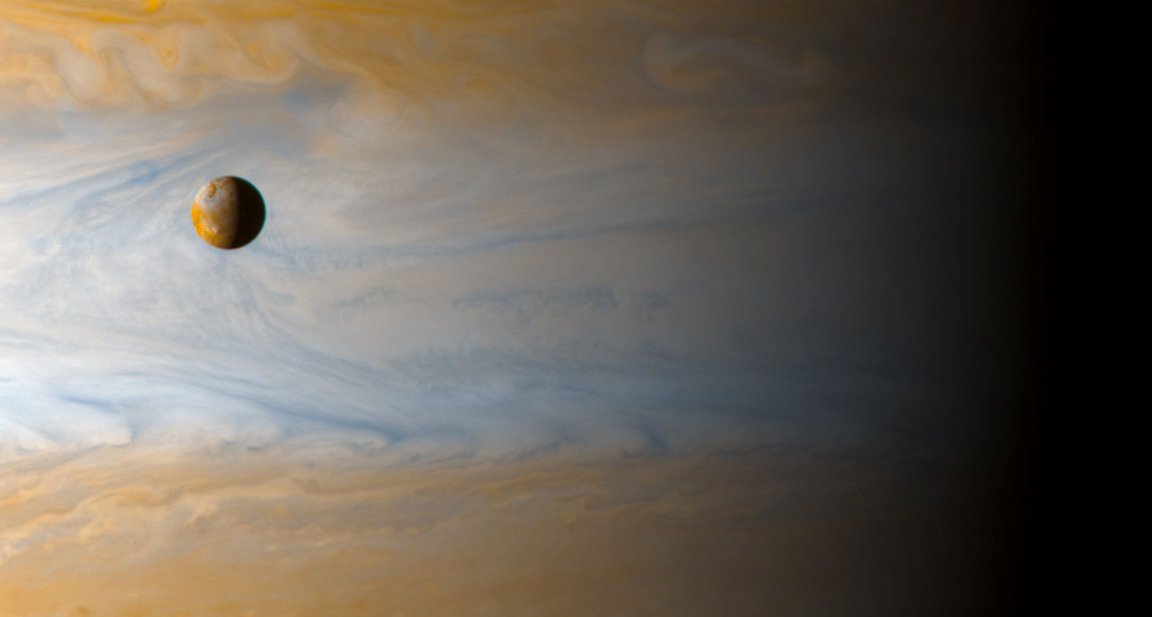
The Volcanic Moon
Jupiter’s moon Io is one the most exotic places in the entire solar system. It is also one of the worst places to try and establish a human colony (though none of the bodies in our solar system really look appealing in that regard).

To begin, the moon is the most volcanic body in the solar system, with its sulfurous landscape covered with lava flows, lava lakes, and giant calderas. It has hundreds of erupting volcanoes that shoot streams of lava up to 400 kilometers (250 miles) high, and even taller volcanic geysers that blast sulfurous plumes 500 kilometers (310 miles) into space.
It also has mountains that tower over any seen on Earth, reaching heights of up to 16 kilometers (52,000 feet).
This intense geological activity results from the heat produced by the gravitational tug-of-war between Jupiter and timed pulls from another moon, Europa, which orbits Jupiter farther out than Io. Because the two bodies are so close to Io, it causes the moon to to contract and bend. This shifting of Io’s crust generates friction and heat – which ultimately generates the extreme volcanic activity.
Io also orbits Jupiter closer than the Moon does Earth, putting the volcanic world within an intense radiation belt and bathing the satellite with energetic electrons, protons, and heavier ions. So not only is this a volcanic world—it is irradiated. In short, living there would be rather next to impossible for life as we know it.
Misplaced Volcanoes

Io also appears to have its volcanoes in the wrong place. NASA researchers have found that this may have been caused by tides flowing in a subsurface ocean of molten rock within the moon. Viscous or “sticky” fluids can generate heat through the frictional dissipation of energy as the moon flexes and moves.
“Our analysis supports the prevailing view that most of the heat is generated in the asthenosphere, but we found that volcanic activity is located 30 to 60 degrees East from where we expect it to be,” said Christopher Hamilton, of the University of Maryland, College Park, in the press release. “Our analysis supports a global subsurface magma ocean scenario as one possible explanation for the offset between predicted and observed volcano locations on Io,” says Hamilton. “However, Io’s magma ocean would not be like the oceans on Earth. Instead of being a completely fluid layer, Io’s magma ocean would probably be more like a sponge with at least 20 percent silicate melt within a matrix of slowly deformable rock.”
So definitely not the kind of place that you’d want to take an evening swim.